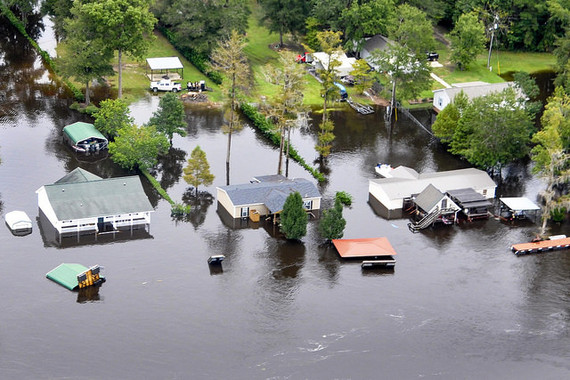Unfortunately, a disaster--natural or manmade--can occur at a moment's notice. Fires, floods, tornadoes and water main breaks are just a few of the catastrophes that can devastate a business without warning.
According to German insurance company Munich Re and the Insurance Information Institute (I.I.I.), approximately nine natural disasters occurred in the U.S. in 2013, which resulted in $12.8 billion in damages.
In fact, the recent flood damage in South Carolina alone has displaced hundreds of families, caused at least 17 deaths and racked up billions of dollars in damages.
Once a major loss damages and disrupts a business, the battle as a property and business owner has just begun. Dealing with extensive damage and financial losses can be a daunting task, especially for owners who are not prepared for, or unfamiliar with, how to handle a major interruption to their operation.
Below, we offer tips on how to navigate the claim, recovery and restoration process following a major loss to your business property.
Claim Submission and Loss Assessment
In the unfortunate event that your business sustains property damage, it is important that a claim be submitted to your insurance agent, and carrier, as soon as possible. The earlier a claim is filed the better.
Your trusted insurance partner should help you interpret your policy and coverages, determine loss and guide you through the claims process.
If you wait to file a claim, your business will pay the price. The longer you wait to submit a claim, the longer it will take for your insurance carrier to process, assign an adjuster to your case and ultimately pay out for damages.
In addition, you must take immediate action to protect your business from future damages until repairs or restoration can be completed. If this requirement is not met, it can cause complications with your insurer when processing and receiving claims payments. Save all receipts associated with any temporary repairs for proof of protective measures taken and possible reimbursement.
Once you file the claim, a claims adjuster or independent adjuster will be assigned to your claim case. The adjuster will schedule an in-person appointment to assess the damage done to the property and determine the estimated loss. If possible, request an adjuster with claims experience in your field/industry to ensure the damage assessment is more accurate.
Once damage is assessed, you can expect to receive a claims payment for the value of loss incurred (and the extent covered by your policy). Be sure to ask your insurance partner if you are reimbursed before or after the restoration process, as this can drastically change your restoration strategy.
Contractor Selection and Rebuilding
After a physical loss, businesses are faced with a critical decision--do you remain open during the restoration process, or close until work is completed?
You have several options:
- Remain open during the recovery and restoration process.
- Close off a portion of the business, or shut down until the recovery and restoration process is complete.
- In case of total loss, find a temporary location or estimate the time that will be required to reopen a new facility.
If your resources are limited, determine which aspects of you property are most vital to reopening your business and focus on those first.
Once you understand the extent of damages suffered and amount covered by your insurance, it's time to start the rebuilding process. But how do you select the best contractor for the job?
- Talk to your insurance agent about which contractors in your area specialize in needed repairs and are part of your carrier's network. Choosing a contractor with an established relationship with your insurance provider can expedite work and claims payments.
- Conduct your own search for contractors. Use sites like Better Business Bureau to find out which contractors have earned the trust of your community.
- Ask other business owners, friends and family members who have worked with local contractors/vendors. Peer reviews offer insight into the experience of working with a particular shop.
Once contractors are selected, create a construction timeline. An organized timeline will help you set progress milestones to better coordinate workers on-site and equipment and supply deliveries.
Claims Payment Questions to Ask Your Insurance Partner
The claims process can be tricky to navigate, especially for major losses. Here are a few recommended questions to ask your insurance partner when developing your restoration strategy.
- What damages are covered by my business insurance/business owners policy (BOP)?
- How much loss am I covered for?
- Does my policy cover debris removal?
- Am I covered for lost income during an interruption to my business?
- Do I need to consider additional coverage for unique exposures like equipment breakdown, flood or food spoilage?
- How quickly can I anticipate my carrier will pay out for losses? Will I need to pay out of pocket before I am reimbursed?
- Do you have a list of selected contractors that you have worked with in the past?
For more tips on how to navigate the claims and restoration process, check out my blog on www.INGUARD.com.
Image Credit: U.S. Department of Agriculture via Flickr
Note: A version of this article originally appeared on www.INGUARD.com.
